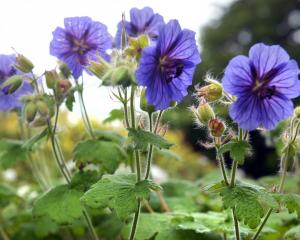
They are rounded or distorted growths, where the internal grain has grown in a deformed manner.

They are a reaction to stress, perhaps from insects, an infection or mechanical damage, and this causes abnormal cell development.
Burrs are also known as burs (English) or burls (American) depending on what part of the world you come from, and they are still covered in normal bark.
They develop on trunks or branches but are more common underground where they grow on roots.
Once you are aware of them, you notice there are a lot of burrs around.
They can grow on any tree species, and commonly found on cherry, elm, walnut, maple, oak and ash.
Burrs can grow to a tremendous size. Arguably, the largest is found on a coast redwood, Sequoia sempervirens in America.
Reputed to be 8m across, it nearly surrounds the entire trunk.
In the botanic garden camellia collection, nearest the rose garden, is a large fully mature European beech tree, Fagus sylvatica, with an impressive burr.
The large burr is on the main trunk a few metres above ground, about 1m across and roughly round. You can’t miss it.
Burrs provide beautifully intricate and highly decorative wood which is prized by sculptors and wood turners.
• Garden Life is produced by the Dunedin Botanic Garden. For further information contact Marianne Groothuis.











